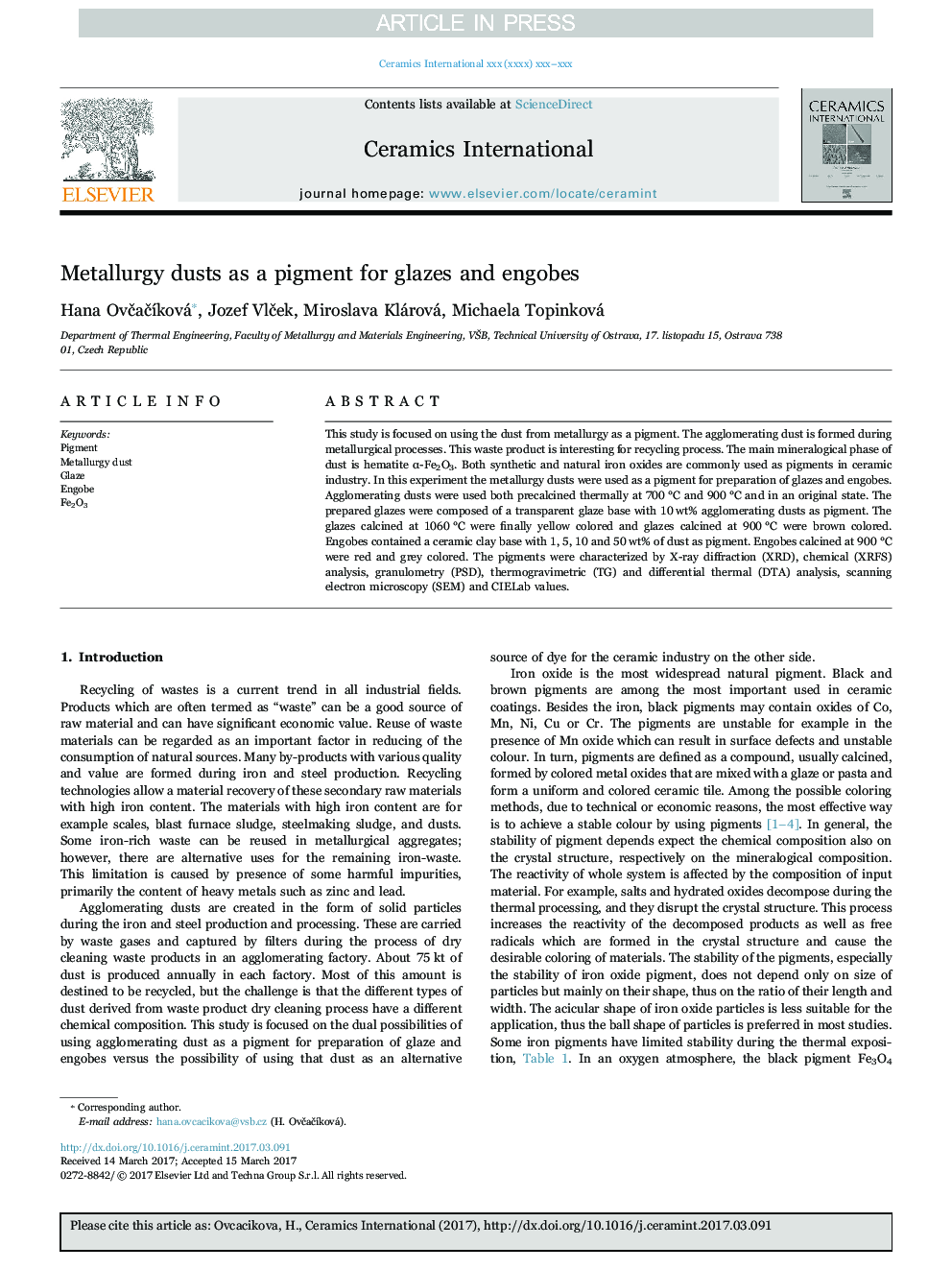| Article ID | Journal | Published Year | Pages | File Type |
|---|---|---|---|---|
| 5438568 | Ceramics International | 2017 | 8 Pages |
Abstract
This study is focused on using the dust from metallurgy as a pigment. The agglomerating dust is formed during metallurgical processes. This waste product is interesting for recycling process. The main mineralogical phase of dust is hematite α-Fe2O3. Both synthetic and natural iron oxides are commonly used as pigments in ceramic industry. In this experiment the metallurgy dusts were used as a pigment for preparation of glazes and engobes. Agglomerating dusts were used both precalcined thermally at 700 °C and 900 °C and in an original state. The prepared glazes were composed of a transparent glaze base with 10 wt% agglomerating dusts as pigment. The glazes calcined at 1060 °C were finally yellow colored and glazes calcined at 900 °C were brown colored. Engobes contained a ceramic clay base with 1, 5, 10 and 50 wt% of dust as pigment. Engobes calcined at 900 °C were red and grey colored. The pigments were characterized by X-ray diffraction (XRD), chemical (XRFS) analysis, granulometry (PSD), thermogravimetric (TG) and differential thermal (DTA) analysis, scanning electron microscopy (SEM) and CIELab values.
Related Topics
Physical Sciences and Engineering
Materials Science
Ceramics and Composites
Authors
Hana OvÄaÄÃková, Jozef VlÄek, Miroslava Klárová, Michaela Topinková,
